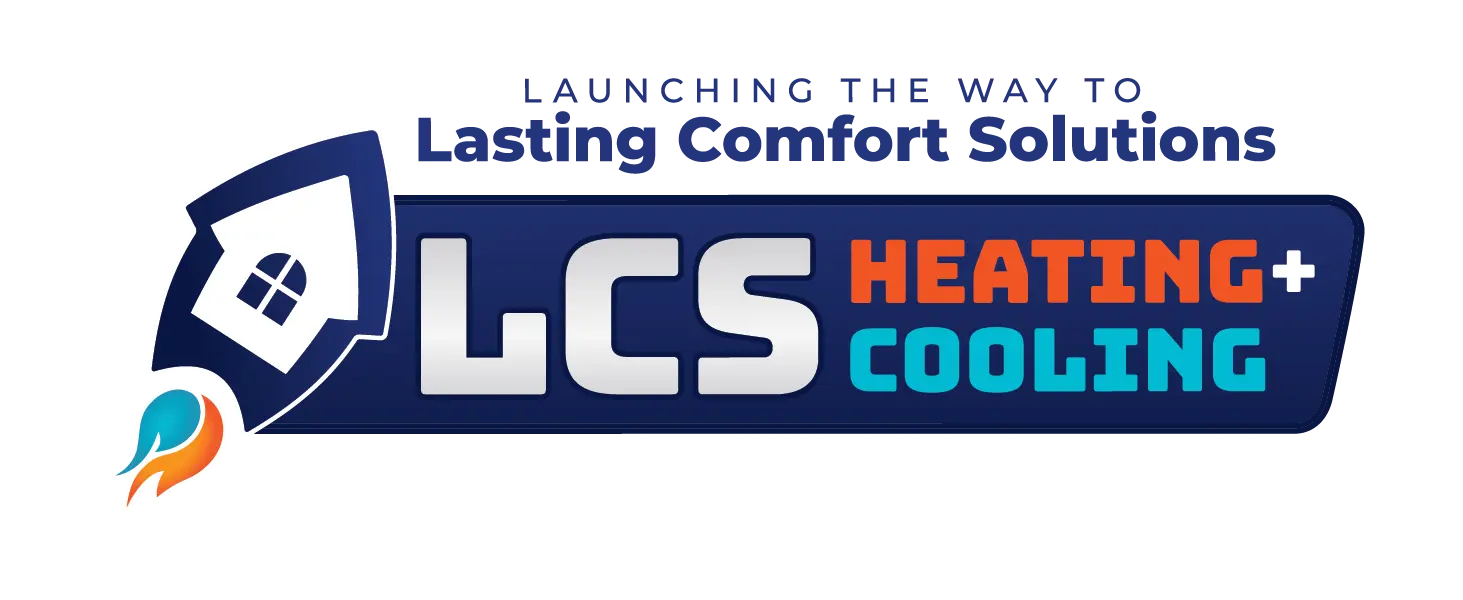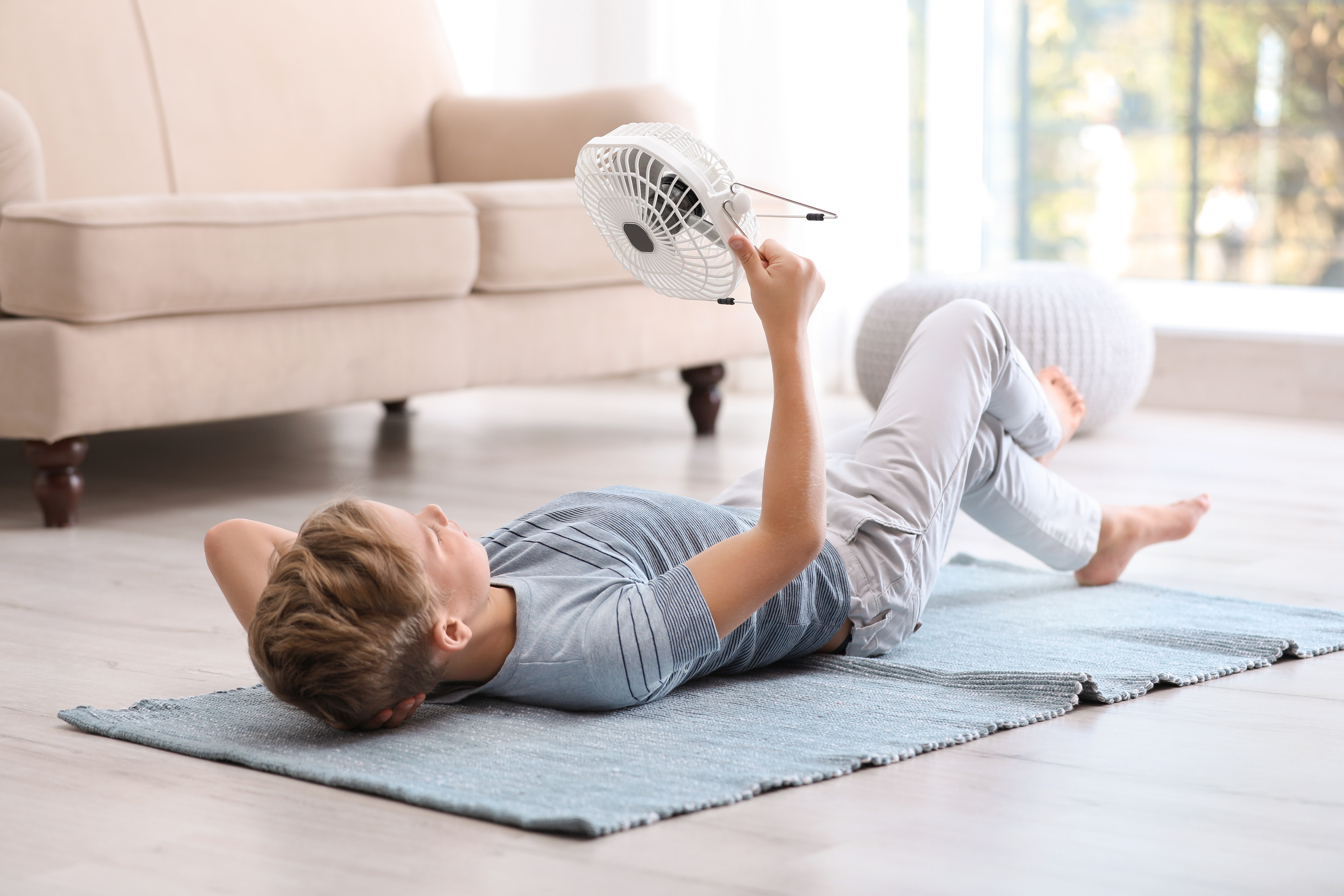With warmer days ahead, you want to make sure your AC is ready to go. Sometimes the long break during winter will stop your unit from running properly when you need it to start up. A little maintenance can go a long way.
Prepping Your AC Unit After Winter
It’s always a good idea to clear any debris around your AC unit before turning it on. Sticks and leaves from the fall and winter can collect around your system and interfere with its air flow and overall function. After you check that area out, take a peek at your air filter. It might be time to swap your old filter out for a clean, new one. This will make it easier for your AC to run.
You’ll also want to make sure your unit has power. If the unit doesn’t kick in after you’ve adjusted your thermostat, go ahead and take a look at your circuit breaker before calling your HVAC company. The switches should be flipped to “on,” so this could be a simple fix if you’re having trouble with your AC. Otherwise, you might be looking at some different issues.
Common Problems Starting Your AC
Some problems that pop up after winter are relatively easy to fix, but others require professional expertise. These are some of the most common hiccups we see with units starting up in spring.
1. Thermostat Problems
Hearing a loud racket when you turn on your AC unit is usually a sign that something isn’t right with your blower motor or fan motor. Of course, if you aren’t hearing anything at all, then you might be having a problem with your thermostat.
The electrical wiring from your thermostat is connected to your AC. Assuming your thermostat has good batteries, you might be facing an issue with some electrical work. An HVAC professional can take a look and let you know what needs fixing.
2. Low Refrigerant
When your unit doesn’t have enough refrigerant, it won’t be able to cool your home. Your HVAC company will have the equipment needed to measure the levels and see if they’re low. Unfortunately, just topping off the refrigerant might not be enough. Your system could have a leak. If your HVAC technician says low refrigerant is to blame, make sure they’ve also done a leak search. You don’t want the issue to repeat itself!
3. Dirty Units
After the “off” season, you might also have trouble with a dirty system. The AC unit itself, also known as the condenser, may have dust and debris inside it. This can mess with the fans and block airflow, just like a dirty air filter indoors. A good cleaning can help.
In other cases, you could be facing a dirty evaporator coil. Older units and equipment that hasn’t been serviced in a while will sometimes run into this problem. Because the coil needs to be completely removed for cleaning, this isn’t something you can handle on your own. You’ll need an HVAC technician to help you out. Still, it’s a pretty quick process.
Plan Ahead with a Spring AC Tune-Up
Letting your unit run when it isn’t working properly can lead to a series of bigger problems. If your unit isn't working for your home, call on your HVAC company. Units that are dirty or need a leak repaired should be addressed sooner rather than later. Typically, these problems can be fixed during your annual maintenance!
Scheduling regular maintenance can keep your unit working its best. A technician can check all of your connections, clean up your unit, lubricate its moving parts, and more. Our LCS Annual Maintenance Plans are designed to help you out.
Getting routine checks with your unit before it acts up can help extend its life. Plus, it’s more convenient than waiting for service when something goes wrong. The temperatures will only continue to rise, and you don’t want to be caught without cool air. Let us know how we can help. Give our team a call at (317) 238-3961.
May 10, 2019
The ENERGY STAR label is pretty recognizable, but that blue and white logo is more than just a pretty sticker. It’s proof from the EPA that a product is in the top tier for efficiency. And that means big savings on running your home appliances.
The label’s real goal is to help consumers identify energy-efficient products. Since the program’s inception in 1992, ENERGY STAR has helped people save an estimated $430 billion on their utility bills. But do you know what those savings actually mean for your own annual expenses?
About the Ratings
As a general rule, the ENERGY STAR label is awarded to the top quarter of products on the market. Put another way— an air conditioning unit that qualifies for the ENERGY STAR certification typically ranks in the top 25% for energy efficiency. This classification helps tell consumers which products might have a better long-term value.
You see, it’s not just about the upfront costs on major home appliances. You also have to consider how much it will cost to run the equipment every day and every year. In that sense, ENERSY STAR appliances are a lot like cars with low gas mileage. Two vehicles might cost the same on paper, but the one that can get 5 or even 7 more miles to the gallon might be a better option because it’s less expensive to run. Saving on energy costs is always better for your bottom line.
Savings with ENERGY STAR Appliances
The latest technology makes a big difference with efficiency. Check the numbers and it’s easy to see—opting for ENERGY STAR appliances is a great way to lower your utility bill every season.
Laundry Machines and Dishwashers
New “smart” features allow your machines to use less energy (and less water) when cleaning your clothes and dishes. And you still get a good clean! Laundry machines that qualify for the ENERGY STAR label require 40 to 50% less energy, and dishwashers work with 41% less energy (compared to the federal minimum standards).
Refrigerators and Freezers
Better insulation and more accurate temperature readings make these ENERGY STAR products big winners. Qualified refrigerators use at least 15% less energy, and qualified freezers use at least 10% less energy than what the current federal standards require.
Heating and Cooling
Roughly 50% of your home’s total energy costs are spent on heating and cooling. Choosing high-efficiency models can help knock down the total on your utility bills and give you some pretty noticeable savings month-to-month. ENERGY STAR air conditioners, for example, are typically 15% more efficient than other standard units.
Smart Thermostats
Pre-programed settings and WiFi features help keep your home comfortable and energy-efficient 24/7. Although the ENERGY STAR specification for programmable thermostats is no longer active, installing a “smart” thermostat is easily one of the best home upgrades you can make. Homeowners can save an estimated $180 every year on their energy costs just by making the switch to a newer model.
More Ways to Save
Your ENERGY STAR appliances aren’t just helping your lower your utility bills—they can also give you credit on your taxes. Whether you’ve upgraded some windows or doors in your home, or just swapped out your dishwasher for a newer, more efficient model, be sure to claim those credits on your taxes.
ENERGY STAR qualified central air conditioning units can give you a $300 tax credit, and the same goes for high-efficiency heat pumps. Qualified gas furnaces will get you a $150 tax credit. Check out this overview on 2016 benefits for more information. It’s another great perk of efficient equipment!
And remember: The high-efficiency ratings on your HVAC equipment heavily rely on annual maintenance. Wiring and electrical parts need to be regularly tested to make sure they’re running at peak efficiency. If you haven’t already scheduled your spring system tune-up, be sure to give LCS a call at (317) 238-3961. Our team would be happy to help you out!
March 31, 2017
We all want our homes to be comfortable year-round. In the summer, we want to stay cool. During winter, we seek heat. For some homeowners, a heat pump can give them the best of both worlds!
These types of units are often super energy-efficient because they use heat that’s already present. By working with both indoor and outdoor air they can balance—or rather, counterbalance—whatever temperature you want inside. A heat pump can be a great asset. But when it’s not working properly, no one’s happy.
How Heat Pumps Work
If you want to understand heat pumps, it’s good to know that they aren’t too different than an air conditioner or refrigerator. Think about it this way: The coils on the back of the fridge always feel a little hot because the refrigerator works to pull warm air out. That’s why everything in the box stays cool. The same goes for air conditioning units. They’re made to extract heat from the air, and then sort of “exhale” it outside.
They have similar parts and similar purposes to air source heat pumps, but the heat pump has one unique advantage. Both refrigerators and A/C units work to keep places cool. What’s neat about heat pumps is that they work to both cool and heat a home. Here’s the shortlist of what they’re made of:
- Compressor
- Liquid Refrigerant
- Fans/Fins
- 2 Sets of Coils—one for indoors, the other for outside
- Reversing Valve (this is what makes the heat pump different)
Their overall goal of a heat pump is to move heat from one area to another. The compressor works to circulate refrigerant between the two coil sets. And that refrigerant either absorbs or releases heat—depending on the coil set—to get your indoor temperature just right. The fans help move the air around so when you’re ready to switch seasons, your cooling unit can become a heating unit.
Switching the thermostat from heat to cool, or vice versa, will cause the reversing value to switch the direction flow of refrigerant. At that point, the hot air will move in the opposite direction. Rather than “exhaling” the air outside, as it does in the summer, it “exhales” the air inside, producing efficient and economical heat.
Since they do double-duty, heat pump systems can run in any season. They push hot air outdoors in warmer months, and then pull warm air indoors when it’s cold. It’s all with a flip of the switch. Pretty cool, right?
Pros and Cons
Heat pumps have a big appeal for cutting energy costs because they don’t have to exert as much energy creating the heat. They simply use the heat that’s already present and move it to where you need it. Some people don’t realize that there’s still some amount of heat in the air even in cold weather. The little heat pump can still do its thing in winter because it draws in all the heat it can find outdoors and sends it inside.
So as long as outdoor temperatures aren’t super-low, the heat pump can easily be the only heating source for a home. For moderate climate areas, these units can save big bucks on energy costs. It’s when the thermometer drops that it might need backup. As a general rule, this tends to happen when it falls to 30 degrees or below outside.
Because a heat pump isn’t the most effective heating source in below-freezing temps, it might need to be partnered with another supplemental heat source, like a furnace or an air handler, during extreme winter weather. If you’re unsure about your area’s limits, it’s a good idea to consult with a local professional. The right heating and cooling setup can keep your home comfortable and energy-efficient year-round.
Heat Pump Maintenance
Like other HVAC units, a heat pump will last longer with annual maintenance. In addition to annual maintenance, A lot of heat pump users also extend the lifespan of their unit (10-12 years is average) by changing the filter on a regular basis, or about once a month for consistent use. Other than that, just keep the fans and coils clear of debris and you should be set!
If other problems arise, you might need to call on a professional. They can help you diagnose any heat pump repairs by doing all of the following:
- Check indoor coils, ducts, or filters for obstructions
- Seal leaking ducts and ensure adequate airflow
- Confirm proper refrigerant charge (and no leaks)
- Inspect electric terminals, and clean or tighten connections
- Lubricate interior motors, and check belts for tightness and wear
- Test reverse valve and thermostat operations
A heat pump can help keep energy costs low throughout the year—but only as low as it’s properly maintained. A neglected heat pump can end up wasting as much as 25%. So as long as you have a heat pump, you’ll want to keep it in good working order to get those energy savings.
Whether you want to be warmed up or cooled off, a heat pump is a great solution for home comfort. If it’s not doing its job, call in a good heat pump company. A few repairs might be able to put it back on the right track.
September 29, 2016
Furnace FAQ
Heating season is just beginning but the questions about furnaces are rolling in! We thought it might be helpful to post and answer some of the most frequently asked questions about heating season and equipment. Here we go!
1. Is it safe to turn my furnace on before maintenance has been completed? The answer is YES! A good cleaning and tune-up on the furance is needed to keep it running as efficiently as possible. However, it's not necessary to have this service done before the furnace is turned on for the first time each year. It's just important that it's done once a year. We actually recommend turning the furnace on before it gets too cold outside. That way, if there is a problem with the furnace and you are without heat, you can get it taken care of before it's really cold.
2. There was an odor when I turned my furnace on the first time. Is this normal? Dust will collect and settle in the furnace during the summer months when it is not being used. When the furnace is fired off the first time, the dust will burn off the heat exchanger. Some people describe it as a burning smell. This is normal and will go away after the furnace has cycled a few times. If an odor continues though, it's best to get it checked out.
3. How often do I need to change my filter? Is it the same filter that I changed for the air conditioner? An HVAC system consists of a furnace (either gas or electric) and either an air conditioner or heat pump. Each system has a filter that needs to be changed regularly. It's the same filter whether you are using the furnace or air conditioner. If you have a 1" filter, it's recommended to check the filter once a month and change as needed (usually once a month or once every other month). If you have a media filter- 4" or 5"- it is recommended to check the filter every 3 months and change as needed. Changing the filter is very important!! A dirty filter can restrict air flow enough to make the furnace or air conditioner stop working.
4. I have a heat pump and a furnace. Do I need to turn the heat pump off and furnace on? All you need to do is turn your thermostat to Heat. Your heat pump will turn on in heating mode. Your heat pump will heat the house until it reaches a certain temperature outside. This is called a set point and is already set on your heat pump. For example, if your set point is 32 degrees, than once the outdoor temperature gets that cold, your furnace will automatically turn on. If you have a gas furnace, your system will automatically switch from using the heat pump to using the gas furnace. If you have an electric furnace, the furnace will kick on at the same time to help the heat pump maintain the indoor temperature. This is all done automatically so there's nothing you need to do to make this happen!
5. There seems to be something wrong with my furnace. What do I do? There are a couple of things that you can do on your own. Check your filter. If the filter is dirty, change the filter, then turn the furnace off and back on. Also, check the batteries in your thermostat (if applicable). If the thermostat screen has gone blank, it could just be batteries. If you still have a problem, then give us a call and we'll be happy to set up an appointment.
If you still have a question about your furnace, please don't hesitate to ask! We want you to stay warm and comfortable in your home.
Annual Maintenance: Why Not Just Do It All at Once?
Next to keeping a clean filter installed in your HVAC system, annual maintenance is the most cost-effective way to ensure that your furnace and air conditioner are running as efficiently as possible. Our Energy Savings Plan is a preventative maintenance plan in which the air conditioner is cleaned and tuned in the spring or summer and the same is done on the furnace in the fall or winter. Maintenance is much more than just spraying out the air conditioner or vacuuming the inside of the furnace. All of the components, wiring, motors and refrigerant levels are checked during the tune-up. Hopefully, everything will be in proper ranges. If there is an issue, we can bring it to your attention and discuss any options so you can determine how you'd like to handle it.
While maintenance will not guarantee that parts won't go bad on the furnace or air conditioner, problems may be found before they cause issues. For example, a motor may have higher than usual readings or a part may be making a louder than normal noise. Catching these things before they actually go out will not only save you a service call fee but will also keep you from being without air conditioning on a hot day!
We are occasionally asked: Why do you come out twice a year? Why not just do the furnace and air conditioner maintenance all at once? While it's important that the maintenance is completed at some point each year, it's preferred to complete the cleaning and tune-up just before or during the season that it'll actually be used. That also means that we'll be checking the filter for you twice a year and completing maintenance on other items such as humidifiers just before they'll be used as well. By seeing a technician twice a year, we can ensure that all of your questions or concerns are answered about your system so that it's running as well as it can all year long.
For more information, additional benefits and pricing on our Energy Savings Plan, please click here.
Air Conditioner Maintenance- Is It Worth It?
One of the most frequently asked questions we get is: Is it worth it to have maintenance done on my furnace and air conditioner?
The answer is YES. Here's why:
Either your furnace or air conditioner is running just about every day of the year. Sure, we'll have a few days in the spring and fall in which it's pleasant enough to turn the HVAC system off and open the windows, but for the most part, the furnace or air conditioner is running. Any piece of equipment that constantly runs is going to need cleaned and tuned up. Think of your car, for example. How well would it run if you never changed the oil, never rotated the tires or never had the 30,000, 50,000 or 75,000 mile tune-up? Same holds true for your furnace and air conditioner. While it may run without ever being cleaned or tuned, it will also have to work harder and it may not run as efficiently as it could.
There are some repairs that can be prevented with regular maintenance. While completing maintenance on the air conditioner, for example, the technician may see that the capacitor is swollen. The capacitor could then be replaced at that time. This would prevent a later service call charge as well as the inconvenience of being without air conditioning and having to be home for the repair to be made. With a furnace, you might encounter a dirty flame sensor. Flame sensors are cleaned as a part of maintenance which can prevent a furnace shut down which would have been prevented with regular maintenance. Forgetting to change the filter is another common problem. The furnace overheats or the air conditioner freezes up simply because the filter is dirty and restricts air flow. Filters can be changed as a part of your maintenance plan or the technician can simply remind you that it's time to change the filter.
The furnace and air conditioner will certainly run better when annual maintenance is completed. That's not to say that a repair won't ever be needed or that every repair can be prevented. Customers with an annual maintenance plan receive additional benefits as well. These include $10 off service call, 15% off repairs, 15% off indoor air quality products (such as thermostats, humidifiers, filters, UV lights, etc) and no overtime rates. In addition, if a repair is needed within 30 days of either maintenance service, the service call would be waived.
HVAC is definitely an investment in your home. Regular maintenance is the best way to protect that investment!



